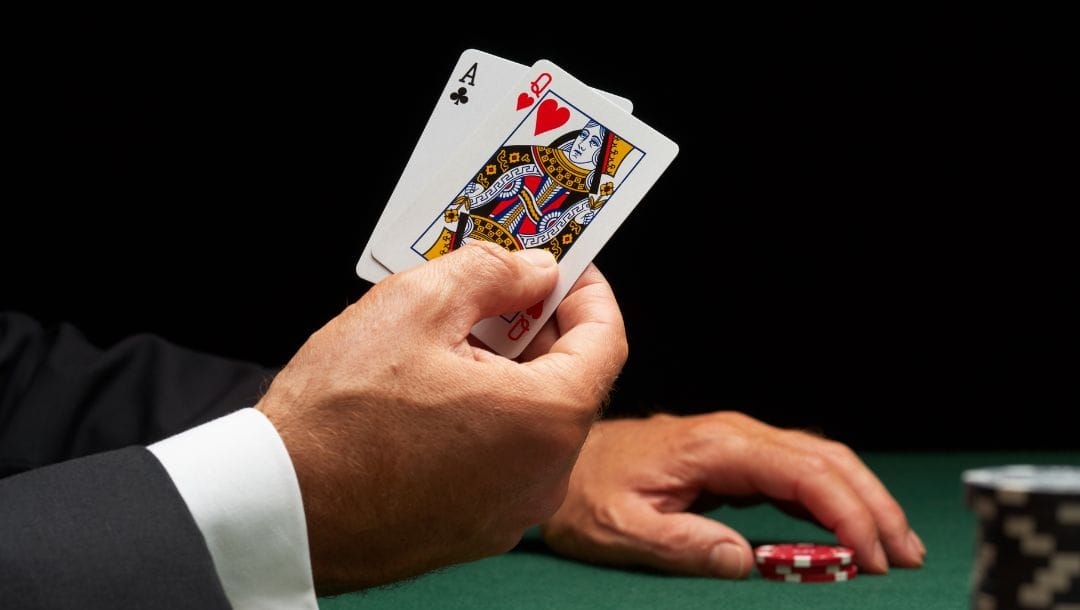
If you’ve ever played a game of poker, you must at some point have thought, “I should’ve known he had that hand.” In hindsight, everything is 20/20; the lessons can hopefully prepare you for similar situations you might encounter in the future. Of course, it might have been nice to know beforehand and have been saved from a huge loss in your stack. This is where you learn the value of knowing how to read people in poker and how to read poker hands. Whether you’re playing live or online poker, poker hand reading is widely regarded as the most important skill any player can have. Here’s a look at how to read hands better and some useful tips that could help you out of a tight spot.
What Are Hand Ranges in Poker?
Every poker player, whether beginner, recreational or professional, has a certain combination of hands they play with. And these are not a set group of hands — they can change with your stack size at any given moment, your position on the table, where in the game you are — preflop, postflop, turn or river — and the styles of the other players.
The combination of cards you’ll play with at any moment of the game is called your hand range. In early position, you’re vulnerable and have little information about the board and the possible hands of the other players. As a result, you should tighten up and generally play only the top hands, such as pocket aces, kings, queens and a combination of these top face cards with other cards. In late position, your options increase considerably and you should have a much larger range to play with. It would do you well to first become familiar with your own hand range, then apply that same research method to establish the possible hand ranges of the other players on the table.
How To Use Hand Ranges To Hand Read

Be prepared to work on this skill. The only way you’ll improve your hand-reading abilities is to practice consistently.
At its most basic, hand reading is divided into two steps. After the cards have been dealt and before the flop, take note of the actions (bet, raise, call or check) of your opponents and use this information to put them on a range of hands suited to that specific player, their stack size and their position on the table. This would be step one. The second step applies to both the turn and the river. After each betting round, with more information at your disposal, you can narrow down their hand range even further. This ability would ideally have you on a possible four or five combination of hands your opponent would be likely to have, depending on the variables mentioned. It’s almost impossible to put a player on one single hand, but you don’t need to since the game of poker is all about odds anyway.
Breaking it down, hand reading involves putting your opponent on a range of hands before the flop and then narrowing this range down on the subsequent streets.
Reading Poker Style
Poker style goes hand-in-hand with range reading. A tight and aggressive player will play with a much smaller hand range than a player whose style is loose and passive. Between these extremes, there are many combinations of styles of play and it would do you well to categorize your opponents into some kind of spectrum of any of these. There are many ways to do this, but all of them mean observing every hand played, regardless of whether you’re in the pot or not. If you play poker online, there are certain tells and patterns of play that will help you along the way, such as certain betting patterns. Does the player raise preflop only when he is in a good position? What are the sizes of his bets? Live poker games add the additional value of physical tells.
Tips To Improve Your Hand Reading Skill

The joke goes, “Excuse me, how do I get to Carnegie Hall?” And the answer comes, not as directions to the venue, but as advice, “Practice, practice, practice.” But what do you practice?
Take time to observe your own play. Online poker sites offer a history of the hands you’ve played. It may take you five hours, a day or a week, but noting your style of play serves as a baseline and a way to compare the styles of other players related to your own. Some players might have the same style as you. You could comfortably put them on the same hand ranges that you play with. Others might play looser or tighter. You can then adjust their ranges accordingly. Once you have done that, become acquainted with the simple two-step process outlined above. The beauty of this method is that not only are you able to work at putting your competitors on a hopefully small range of hands at any given moment, but you’ll also address your own leaks and tells, which will, without a doubt, make you a formidable player.
Play Poker Online at BetMGM
Ready to put your poker hand reading theory into practice? Register at BetMGM for limitless opportunities to get your hand in. Take part in cash games at any time or join one of the daily, weekly and monthly online poker tournaments on offer. Whatever your level or skill or the size of your bankroll, you’re covered. Get your game on at BetMGM.
Improve your poker game by reading hands better. Here’s a look at poker hand ranges and how to improve your ability to read other players.


